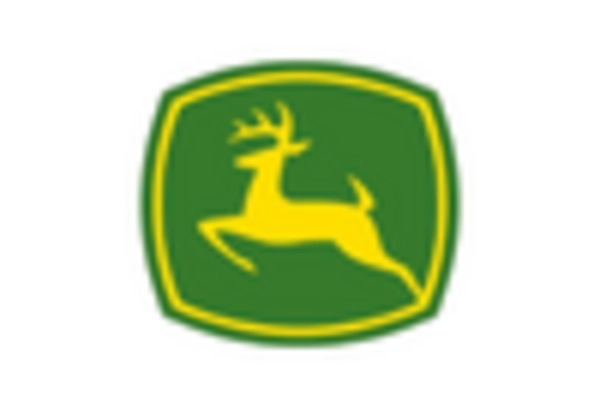Integration of Advanced Data Analytics
The Smart Harvest Market is increasingly influenced by the integration of advanced data analytics. This technology enables farmers to collect and analyze vast amounts of data from various sources, including soil sensors, weather forecasts, and crop health monitoring systems. By leveraging this data, farmers can make informed decisions regarding planting, irrigation, and harvesting, ultimately enhancing yield and reducing waste. The market for agricultural analytics is projected to grow significantly, with estimates suggesting a compound annual growth rate of over 20% in the coming years. This trend indicates a shift towards data-driven farming practices, which are likely to become a cornerstone of the Smart Harvest Market.
Government Support and Policy Initiatives
Government support and policy initiatives play a significant role in shaping the Smart Harvest Market. Various governments are implementing policies that promote the adoption of smart farming technologies, including subsidies for purchasing advanced equipment and funding for research and development. For instance, initiatives aimed at enhancing agricultural productivity and sustainability are being prioritized, which could lead to increased investment in smart harvesting solutions. The financial backing from governmental bodies is likely to stimulate innovation and adoption rates, thereby propelling the Smart Harvest Market forward. This supportive environment is essential for fostering advancements in agricultural technology.
Growing Consumer Demand for Organic Produce
The rising consumer demand for organic produce is a notable driver in the Smart Harvest Market. As consumers become more health-conscious and environmentally aware, the preference for organic products continues to surge. This trend compels farmers to adopt smart harvesting technologies that can efficiently produce organic crops while adhering to strict regulations. The organic food market is projected to grow at a robust pace, with estimates indicating a potential doubling in size over the next decade. This shift not only influences farming practices but also encourages the integration of smart technologies in the harvesting process, thereby enhancing the overall efficiency of the Smart Harvest Market.
Adoption of Precision Agriculture Techniques
Precision agriculture techniques are becoming a pivotal driver in the Smart Harvest Market. These methods utilize technology such as GPS, drones, and remote sensing to optimize field-level management regarding crop farming. By applying inputs like water, fertilizers, and pesticides more efficiently, farmers can enhance productivity while minimizing environmental impact. Reports indicate that the precision agriculture market is expected to reach several billion dollars by 2026, reflecting a growing recognition of its benefits. This trend not only supports sustainable farming practices but also aligns with the increasing demand for food security, making it a crucial aspect of the Smart Harvest Market.
Technological Advancements in Robotics and Automation
Technological advancements in robotics and automation are transforming the Smart Harvest Market. The development of sophisticated robotic systems capable of performing tasks such as planting, monitoring, and harvesting crops is gaining traction. These innovations promise to reduce labor costs and increase efficiency, addressing labor shortages that many agricultural sectors face. The market for agricultural robots is anticipated to witness substantial growth, with projections suggesting a significant increase in adoption rates over the next few years. This evolution in technology not only streamlines operations but also enhances the precision and effectiveness of harvesting processes, marking a critical evolution in the Smart Harvest Market.


















Leave a Comment